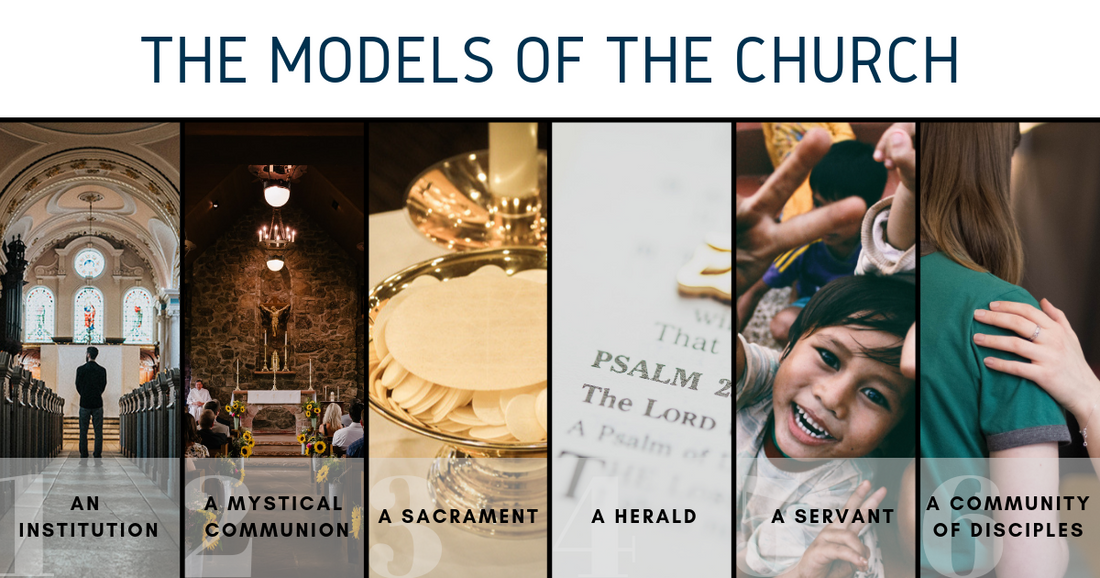
These 6 Models of the Church Embody Christ
Fr. Thomas Dailey, OSFSIn his heyday, Cardinal Avery Dulles (1918-2008) famously employed “models” as a way to explain foundational truths of the faith. His books Models of the Church (1974), and Models of Revelation (1983), educated scores of seminarians and university students around the world.
Models aid our understanding by rendering concepts in visual forms; in turn, they also show how something functions. When that something touches upon the supernatural, models make the mysteries more meaningful by comparison to things more naturally known.
Clinging to the Model of Christ
Dulles originally proposed five models of the Church:
- an institution (with structured order, roles, and practices),
- a mystical communion (uniting members in a shared faith),
- a sacrament (as sign and instrument in the world),
- a herald (with the mission of announcing the Good News of the Kingdom of God),
- a servant (committed to social justice).
To these he later added a sixth model, a community of disciples, as a way of integrating the others through an emphasis on the Church’s never-ending task of following the Lord Jesus.
The cardinal’s fellow Jesuit, Pope Francis, recently introduced a new model relevant to our age of digital media. In his message for this year’s World Communications Day, the pope points to the Church as a social network. His message highlights the need to transform online networks, built on superficial “connections,” into real human communities that reflect “the foundation and importance of our being-in-relation.” This, he says, mirrors the image of the Trinity and distinguishes us as persons and not merely individuals.
For Pope Francis, the Church as social network highlights the connectedness of our shared faith, in which “we are members one of another” (Ephesians 4:25). He concludes his message with the claim that:
“The Church herself is a network woven together by Eucharistic communion, where unity is based not on ‘likes’, but on the truth, on the ‘Amen’, by which each one clings to the Body of Christ, and welcomes others.”
The pope’s model inspires further reflection on the meaning and functioning of the Church in a world of social communications. This is particularly important in light of church closings and a shortage of priest personnel. His emphasis on community and communion also invites us to consider how our parishes embody this model in everyday practice.
The Importance of Parish Involvement
Through the The Disciple Maker Index, the Catholic Leadership Institute has surveyed people nationwide regarding their experience of parish life. Collectively, the data indicate that fostering the communal dimension of the Church is one of the best practices a parish can follow to inspire discipleship. Whether in terms of liturgical celebration, charitable service, or simply social gatherings, parish life thrives when the entire community is involved and engaged.
Unlike online communities, parish involvement strives to be mission-oriented, need-based, and person-centered. In each of these areas, the DMI data point to where we can do more.
Parishes fulfill their mission to be a community of disciples by connecting people not only with God but also with one another. Making information about their Catholic community easy to find is a practice that 47 percent of respondents strongly agree happens in their parish. But only 26 percent strongly agree that the parish follows up with them when they express interest in becoming more involved, and only 21 percent strongly agree that the parishes involve them in important decision-making about the community.
A Welcoming Approach
In terms of serving the needs of others in the community, only 37 percent strongly agree that the parish provides them with opportunities to do so. Even fewer (35 percent) acknowledge that they have volunteered their service sometime in the past year.
Most significant to fostering the local Catholic community is the person-centeredness of a parish. The faithful point decidedly to the importance of any parish making its members feel welcomed and accepted. Those who responded with strong agreement (43 percent) are more likely to credit their parish with helping them to grow spiritually. They are also more likely to recommend their parish to others. This welcoming approach—an embodiment of the belief that “we are (all) members one of another”—remains a key to differentiating those reporting that they practice the Faith from those who do not.
In his message, Pope Francis reminds us:
“God is not Solitude, but Communion; he is Love, and therefore communication, because love always communicates; indeed, it communicates itself in order to encounter the other.”
Therefore, in a Church that strives to be a true network of believers, our parishes need to communicate that love in ways that foster ever greater encounters among and on behalf of their parishioners.
You May Also Like:
From Desert to Parish: The Challenge of Making Disciples
Close Encounters of the Divine Kind
What We Need Is a Change of Heart about Mass
About Fr. Tom Dailey
Fr. Tom Dailey, a priest in the Oblates of St. Francis de Sales (OSFS), serves as a research fellow and spiritual advisor at the Catholic Leadership Institute in Wayne, Pennsylvania. He holds the John Cardinal Foley Chair of Homiletics and Social Communications at St. Charles Borromeo Seminary in the Archdiocese of Philadelphia. He writes a monthly column and does occasional podcasts for CatholicPhilly.com. Check out his feature on CatholicSpeakers.com